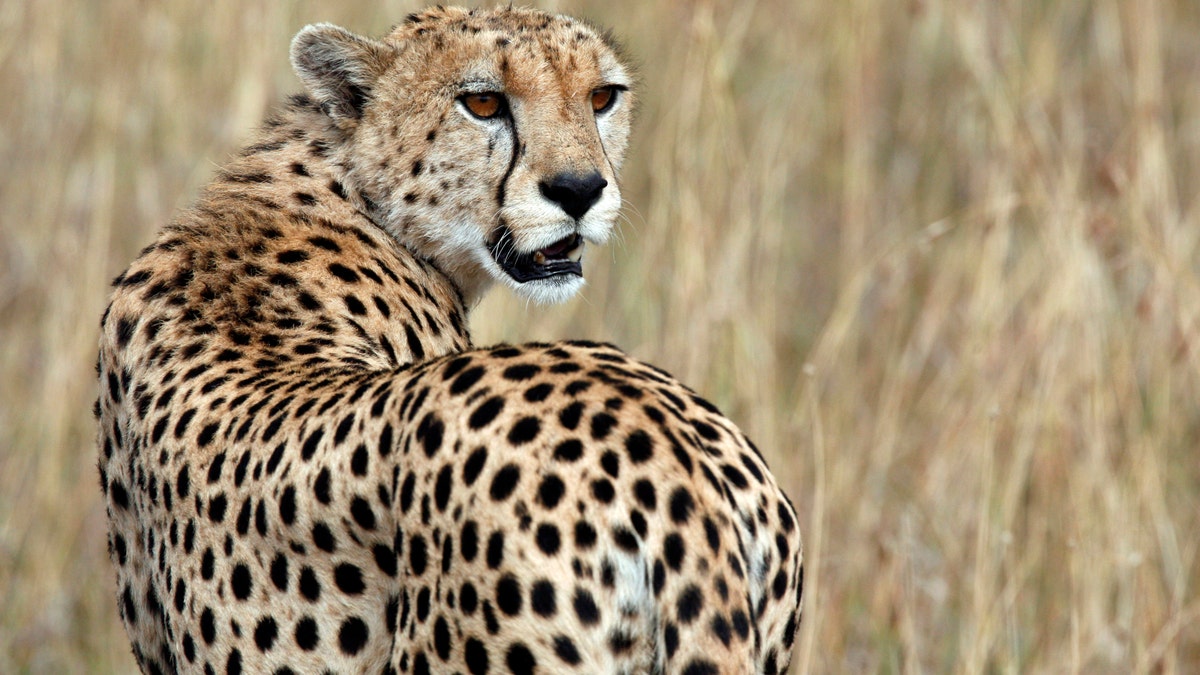
File photo - A cheetah observes the plains in Masai Mara game reserve July 24, 2008. (REUTERS/Radu Sigheti)
The cheetah could be sprinting toward extinction, according to wildlife experts, who warn that urgent action is needed to preserve the species.
A study published Monday by the Zoological Society of London (ZSL), the Wildlife Conservation Society (WCS) and wild cat conservation group Panthera reveals that just 7,100 cheetahs remain in the wild.
Cheetahs have been driven out of 91 percent of their historic range, according to the study published in the journal Proceedings of the National Academy of Sciences. Hardest hit are cheetah populations in Asia, where fewer than 50 individuals remain in one part of Iran.
FREAKY FISH: FISHERMAN CAPTURES UNDERWATER ODDITIES FOUND OFF RUSSIA’S ARCTIC COAST
Threats to cheetahs include overhunting, habitat loss, illegal trafficking of animal parts, and the trade in exotic pets.
Set against this backdrop, the world’s fastest land animal now faces a very real extinction threat, experts say. Zimbabwe’s cheetah population, for example, has plunged a massive 85 percent, falling from 1,200 cheetahs to a maximum of 170 animals in just 16 years.
“Given the secretive nature of this elusive cat, it has been difficult to gather hard information on the species, leading to its plight being overlooked,” said Dr. Sarah Durant, the lead study author for ZSL and WCS, in a statement. “Our findings show that the large space requirements for cheetah, coupled with the complex range of threats faced by the species in the wild, mean that it is likely to be much more vulnerable to extinction than was previously thought.”
OLDEST KNOWN LIVING GORILLA IN US TURNS 60
The study’s authors are urging the cheetah to be “up-listed” from “vulnerable” to “endangered” on the International Union for Conservation of Nature (IUCN) Red List of Threatened Species. Changing the cheetah’s classification could boost the level of international support for conservation efforts and bring greater attention to the challenges facing the species.
As one of the world’s widest-ranging carnivores, 77 percent of the cheetah’s habitat falls outside of protected areas and can span national borders, making protection more difficult.
Scientists now want to see a significant shift in cheetah conservation, encompassing “landscape-level” efforts that transcend borders, coordinated by existing regional strategies.
“We must think bigger, conserving across the mosaic of protected and unprotected landscapes that these far-ranging cats inhabit, if we are to avert the otherwise certain loss of the cheetah forever,” said Panthera’s Cheetah Program Director, Dr Kim Young-Overton, in the statement.




















